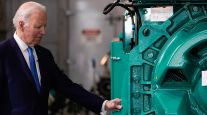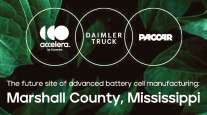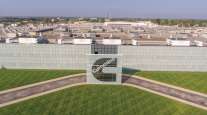Staff Reporter
Cummins Launches New Brand to Further Zero-Emission Goals
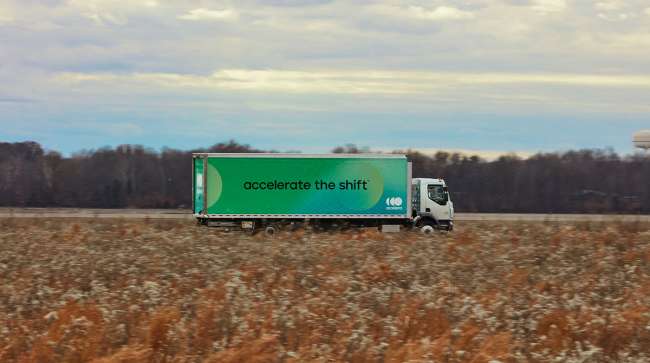
[Stay on top of transportation news: Get TTNews in your inbox.]
WASHINGTON — Cummins Inc. said it is launching a new brand aimed at accelerating the transition to sustainable energy solutions for commercial applications.
Accelera brings together under one brand the many different sustainable energy projects the company has been working on. It will operate as both a developer and supplier for transportation and industrial applications.
Its purpose is to increase the operational flexibility of zero-emission technologies to bring products to market faster.
“Cummins is well known for our engine solutions,” Cummins CEO Jennifer Rumsey said during a launch event March 8. “What people may not recognize is that we have a leading position today in zero-emissions technologies and we have built up our capability. It’s time that we were recognized as both an engine solutions provider and also a zero-emission solutions provider for commercial and industrial applications.”
Cummins’ event to unveil the new brand, at the Rubell Museum, displayed several products, including an electrolyzer stack, batteries and a heavy-duty fuel cell truck.
“By launching this new brand, we are asserting a bold position to continue to lead in our industry and zero-emissions technologies to our customers, to our employees ... to our investors, to policymakers,” Rumsey said. “Cummins will be a leader in zero-emissions solutions.”
Accelera replaces the New Power business unit that launched in 2019. Those operations grew from the nontraditional power business. It has since expanded well beyond its original scope through investments into hydrogen fuel cell, new product launches, partnerships and acquisitions.
The new brand is intended to better structure and grow those operations.
Our latest breakthrough has a name. Introducing Accelera, a @Cummins brand dedicated to zero-emissions. @AcceleraZero provides a diverse portfolio of solutions for the world’s most vital industries empowering customers to accelerate their transition to a sustainable future. — Cummins Inc. (@Cummins) March 8, 2023
“It all starts from the foundational assumption that we have, that the solutions that work in passenger cars can’t easily translate into commercial vehicles or commercial industrial applications,” said Amy Davis, president of Accelera. “They’re just too demanding. So that’s why we’ve put together a portfolio of complementary products and systems that can come together and customize for applications and also commonize in certain areas to gain scale.”
Davis noted that the brand covers various development areas such as electrification, fuel cells and even electric infrastructure. The electrified products include batteries, battery packs, battery management systems, inverters, motors and traction systems that are all then integrated into e-axles.
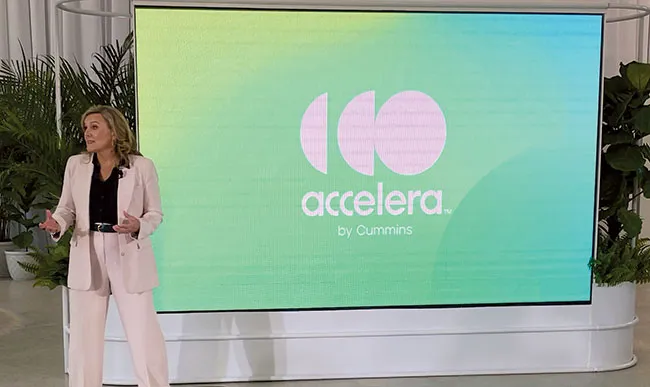
Amy Davis at the launch. (Connor D. Wolf/Transport Topics)
“This puts us in the unique position to provide components, subsystems or even integrated vehicle systems for customers, and we’re doing it today,” Davis said. “This is an important foundation and building block because it really all starts with the electric drivetrain system. And in addition to commercial vehicles, we apply it to industrial and stationary applications, which will be more and more important over time.”
Cummins has designed these applications to run on trucks, buses, trains and airplanes. Davis noted that the advantage of that approach is the company can learn from different approaches simultaneously to then tie that knowledge together to apply to the next iteration of technologies.
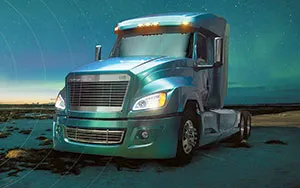
Accelera will operate as both a developer and supplier for transportation and industrial applications. (Accelera)
“We apply this application learning to the next iteration and we tie it together,” Davis said. “Because when you take the fuel cell and you combine it with the battery-electric system, you can extend range and it can apply to the more powerful and demanding applications.”
Cummins said the brand will play a key factor in its overall growth and decarbonization strategy.
The Columbus, Ind.-based company expects its full-year sales to be $400 million to $450 million. That is more than double the revenue in 2022. It also expects that to increase to between $6 billion and $13 billion by 2030.
“This complete product portfolio enables us to have unique business models,” Davis said. “We can sell components like we traditionally have, we can sell subsystems and we can even do complete integrated battery-electric vehicles. But we also can do hub projects or infrastructure projects for those customers who are worried about the chicken and the egg at the same time. So it really comes together in a unique way and it’s a winning proposition. We’re going to win because we have over a hundred years of experience that we can apply these technologies.”
Want more news? Listen to today's daily briefing below or go here for more info:


